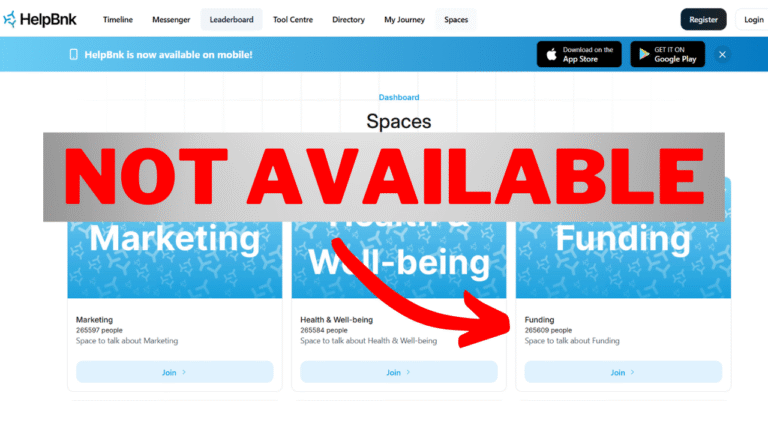How to Scale a Business: 7 Systems That Generate Growth on Autopilot
Last updated: August 2025
Most business owners hit a ceiling around $1-2 million in revenue – not because they lack ambition, but because they lack systems. They become the bottleneck in their own success story, trapped in a cycle of working harder instead of working smarter.
After studying hundreds of businesses that successfully scaled to 8 figures and beyond, one pattern emerged: They all had automated systems doing the heavy lifting.
In this comprehensive guide, you’ll discover the 7 critical systems that separate businesses that struggle to grow from those that scale effortlessly. These aren’t theoretical concepts – they’re battle-tested frameworks that have generated millions in revenue across multiple industries.
Why Most Businesses Never Scale Past $2 Million
Before diving into the systems, let’s understand why scaling feels so difficult for most entrepreneurs.
The problem isn’t your product, market, or even competition. It’s that you’ve built a business that depends entirely on you. Every decision flows through you. Every process requires your input. Every client relationship needs your personal touch.
This works fine when you’re doing $500K or even $1M in revenue. But as you grow, you become the constraint. There are only 24 hours in your day, and at some point, working more hours stops being the solution.
The businesses that scale successfully make a fundamental shift: They build systems that can operate and generate results without constant founder involvement.
The 7 Systems Every Scalable Business Needs
System 1: Automated Lead Generation
What it does: Consistently generates qualified prospects without manual outreach
Why it’s critical: You can’t scale what isn’t predictable. Most businesses rely on referrals, networking, or sporadic marketing efforts. Scalable businesses have systems that generate leads 24/7.
How to implement:
- Create valuable content that attracts your ideal customers (blog posts, videos, podcasts)
- Build automated email sequences that nurture prospects over time
- Use social media automation tools to maintain consistent presence
- Implement SEO strategies to capture organic search traffic
- Set up retargeting campaigns to re-engage website visitors
Real example: Sarah Chen from TechFlow Solutions built a content marketing system that generated 50 qualified leads per month. Her blog posts ranked for industry keywords, feeding an automated email sequence that converted 15% of subscribers into sales calls.
Key metrics to track:
- Monthly qualified leads generated
- Cost per lead
- Lead-to-customer conversion rate
- Lifetime value of customers acquired through the system
System 2: Sales Process Automation
What it does: Converts prospects into customers using documented processes and automated follow-up
Why it’s critical: Without a systematic sales process, your revenue depends on your personal sales ability and availability. Systematic sales processes can be taught, measured, and improved.
How to implement:
- Document your sales process from first contact to closing
- Create email templates and sequences for different prospect scenarios
- Use CRM automation to trigger follow-ups based on prospect behavior
- Develop sales scripts and objection-handling frameworks
- Implement lead scoring to prioritize high-value prospects
The 5-stage automated sales system:
- Lead Qualification: Automated forms and questionnaires filter prospects
- Initial Contact: Triggered email sequences provide value and build trust
- Discovery Call: Structured process to understand prospect needs
- Proposal Delivery: Automated proposal generation and follow-up
- Closing Sequence: Systematic follow-up until decision is made
Metrics to monitor:
- Sales cycle length
- Conversion rate at each stage
- Average deal size
- Win rate percentage
System 3: Customer Onboarding and Success
What it does: Ensures every new customer gets consistent results and becomes a long-term advocate
Why it’s critical: Poor onboarding kills retention and referrals. Great onboarding systems create loyal customers who buy more and refer others.
How to implement:
- Create a standardized onboarding sequence for new customers
- Develop checklists and templates for consistent delivery
- Set up automated check-ins and milestone celebrations
- Build a knowledge base for common questions and issues
- Implement customer success metrics and early warning systems
The 90-day onboarding framework:
- Days 1-7: Welcome sequence and quick wins
- Days 8-30: Core implementation and regular check-ins
- Days 31-60: Advanced features and optimization
- Days 61-90: Results review and expansion opportunities
System 4: Operations and Process Management
What it does: Standardizes how work gets done so quality remains consistent regardless of who does it
Why it’s critical: Without documented processes, you can’t delegate effectively. Every task becomes a custom job that requires your input.
How to implement:
- Document all core business processes step-by-step
- Create standard operating procedures (SOPs) for recurring tasks
- Use project management tools to track and assign work
- Implement quality control checkpoints
- Regular process audits and improvements
Essential processes to systematize:
- Customer service protocols
- Product/service delivery workflows
- Financial management and reporting
- Hiring and training procedures
- Vendor and supplier management
System 5: Financial Management and Reporting
What it does: Provides real-time visibility into business performance and automates financial operations
Why it’s critical: You can’t manage what you don’t measure. Scalable businesses have systems that provide accurate, timely financial data for decision-making.
How to implement:
- Automate invoicing and payment collection
- Set up real-time financial dashboards
- Implement cash flow forecasting
- Create automated expense tracking and approval workflows
- Establish KPI reporting for all key business metrics
Key financial systems:
- Automated bookkeeping and categorization
- Monthly financial reporting packages
- Budget vs. actual analysis
- Profitability analysis by product/service/customer
- Cash flow management and forecasting
System 6: Team Management and Development
What it does: Attracts, develops, and retains high-performing team members who can operate independently
Why it’s critical: Your ability to scale is directly tied to your team’s ability to execute without constant supervision.
How to implement:
- Create detailed job descriptions and success metrics
- Develop systematic hiring and interview processes
- Build comprehensive training programs
- Implement regular performance review cycles
- Create career development pathways
The systematic approach to team building:
- Hiring: Structured interviews and skills assessments
- Onboarding: 30-60-90 day new employee programs
- Training: Ongoing skill development and certification programs
- Performance: Regular feedback and goal-setting systems
- Retention: Recognition programs and career advancement paths
System 7: Strategic Planning and Review
What it does: Ensures the business stays focused on high-impact activities and adapts to market changes
Why it’s critical: Without systematic planning, businesses drift. Scalable businesses have regular cycles of planning, execution, and review.
How to implement:
- Quarterly strategic planning sessions
- Monthly performance reviews and adjustments
- Weekly team alignment meetings
- Daily operational check-ins
- Annual comprehensive business reviews
The strategic system framework:
- Annual: Vision, goals, and major initiative planning
- Quarterly: Tactical planning and resource allocation
- Monthly: Performance review and course corrections
- Weekly: Team coordination and priority alignment
- Daily: Operational execution and problem-solving
How to Implement These Systems (The Right Way)
Implementing all seven systems at once is a recipe for overwhelm. Here’s the proven sequence that works:
Phase 1: Foundation (Months 1-3)
- Start with Operations and Process Management – document your core processes
- Implement Financial Management and Reporting – get visibility into your numbers
- Begin Strategic Planning and Review – create regular planning cycles
Phase 2: Growth Engine (Months 4-6)
- Build Automated Lead Generation – create predictable prospect flow
- Systematize Sales Process Automation – convert leads consistently
- Optimize Customer Onboarding and Success – ensure customer satisfaction
Phase 3: Scale (Months 7-12)
- Focus on Team Management and Development – build your execution capacity
Implementation Best Practices
Start simple: Begin with basic versions of each system and improve over time Measure everything: Track key metrics for each system to ensure they’re working Get team buy-in: Involve your team in system design so they’ll actually use them Iterate regularly: Review and improve systems based on real-world performance Stay consistent: Systems only work if they’re used consistently
Common Implementation Mistakes to Avoid
Mistake #1: Trying to Implement Everything at Once
Focus on one system at a time. Master it, then move to the next.
Mistake #2: Over-Engineering Systems
Start with simple, manual processes. Automate only after you’ve proven they work.
Mistake #3: Not Getting Team Buy-In
Systems that your team doesn’t understand or believe in will fail. Involve them in the design process.
Mistake #4: Setting and Forgetting
Systems require ongoing maintenance and improvement. Schedule regular reviews.
Mistake #5: Focusing on Tools Instead of Processes
The tool doesn’t matter if the underlying process is broken. Get the process right first.
Real-World Results: What to Expect
When properly implemented, these seven systems create compound effects:
Months 1-3: Reduced daily stress as basic operations become predictable Months 4-6: Increased lead flow and improved conversion rates Months 7-12: Significant revenue growth with less personal time investment Year 2+: Business operates largely without day-to-day founder involvement
Case Study Results:
- Lisa Thompson: $1M to $15M in 2 years using these systems
- Marcus Rodriguez: Built and sold his business for 8 figures
- David Park: Created multiple revenue streams generating $31M annually
Your Next Steps
Building these systems doesn’t happen overnight, but every day you delay is another day of limited growth potential.
Here’s what to do right now:
- Audit your current state: Which of these seven systems do you already have in place?
- Identify your biggest bottleneck: Where are you personally most involved in day-to-day operations?
- Start with one system: Choose the system that would have the biggest immediate impact
- Document everything: Write down processes as you build them
- Measure and improve: Track key metrics and optimize based on results
The Bottom Line
Scaling a business isn’t about working harder or finding the perfect marketing strategy. It’s about building systems that can generate growth without your constant involvement.
The businesses that successfully scale to 8 figures and beyond all have one thing in common: they’ve built automated systems that do the heavy lifting.
These seven systems aren’t just theory – they’re proven frameworks that have generated millions in revenue across multiple industries. The question isn’t whether they work, but whether you’re ready to implement them.
Your business has two paths forward:
- Continue being the bottleneck and stay where you are
- Build systems and scale to your true potential
The choice is yours.
Ready to implement these systems in your business? Our proven scaling methodology has helped entrepreneurs build automated systems that generate consistent growth. From lead generation to team management, we provide the frameworks, templates, and hands-on guidance you need to scale systematically.
Want to see if your business is ready for systematic scaling? Book a personalized Zoom call where we’ll dive deep into your specific challenges and goals. Together, we’ll craft a tailored action plan designed to accelerate your growth and boost your sales.
Click here: Coaching
Looking for hands-on implementation support? Our NDB Scale System provides step-by-step guidance and proven templates to build these systems in your business. Learn more about our guided implementation program.
Click here: NDB Scale System






